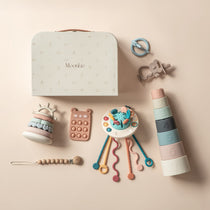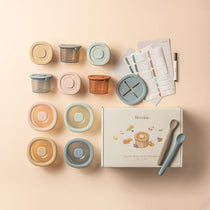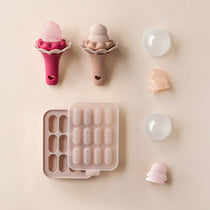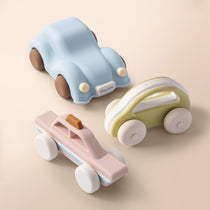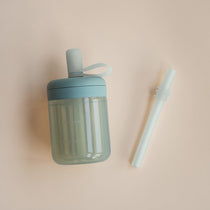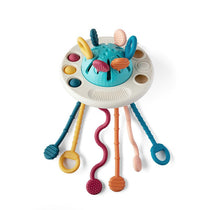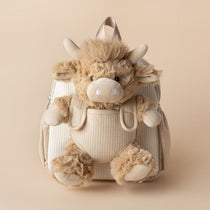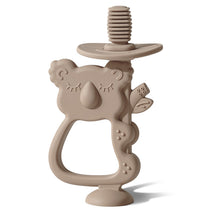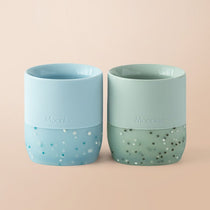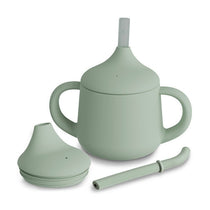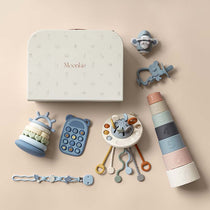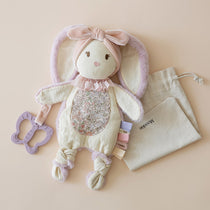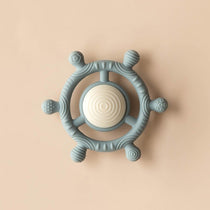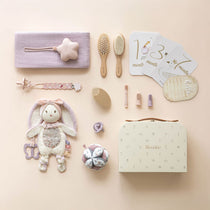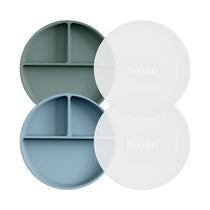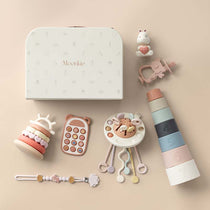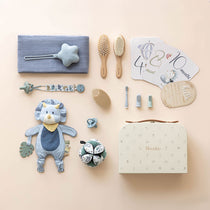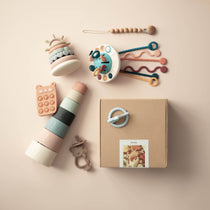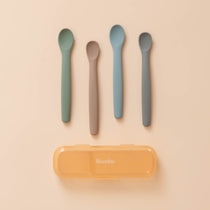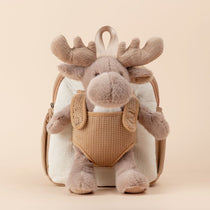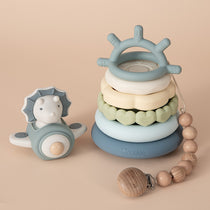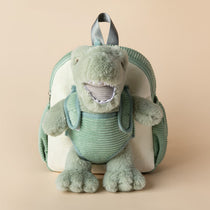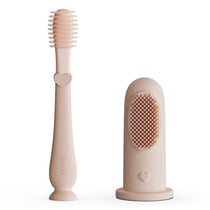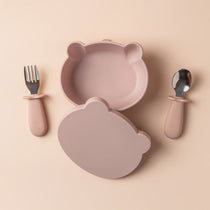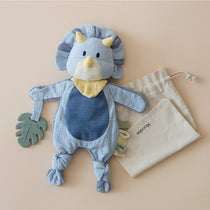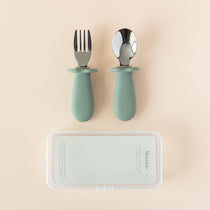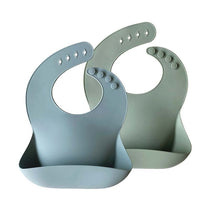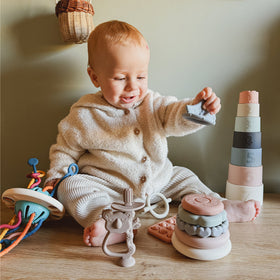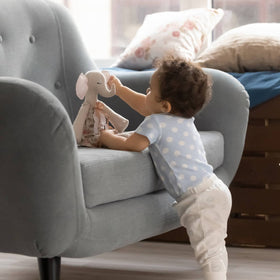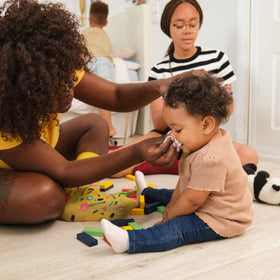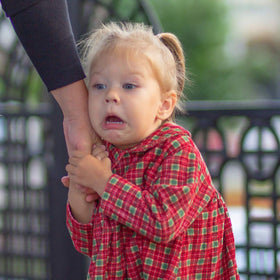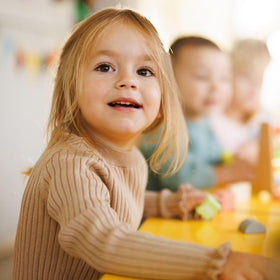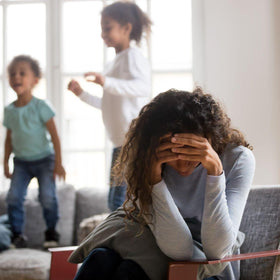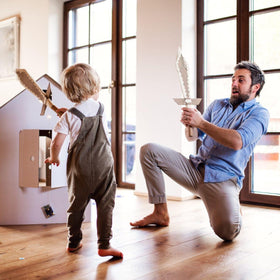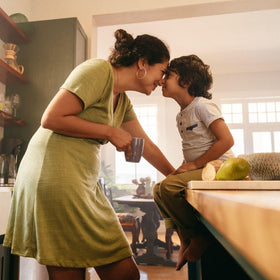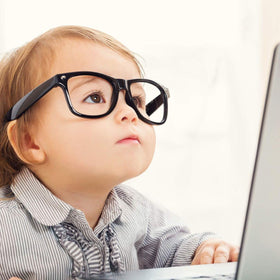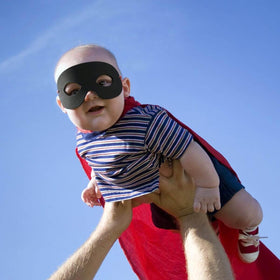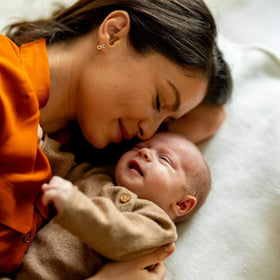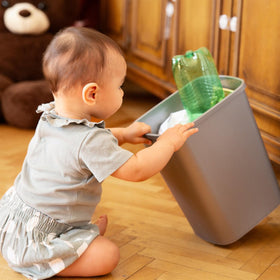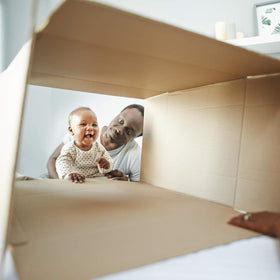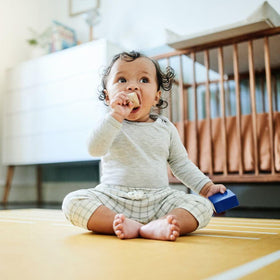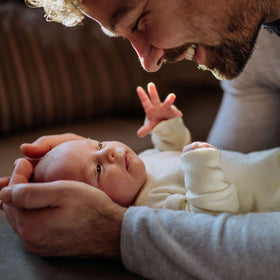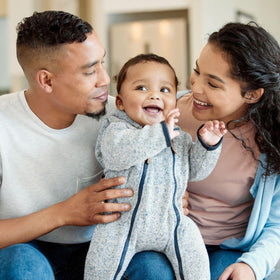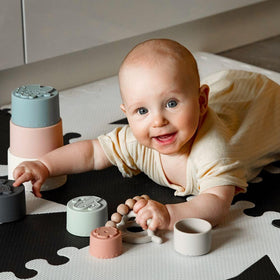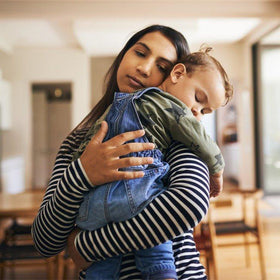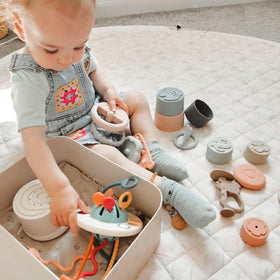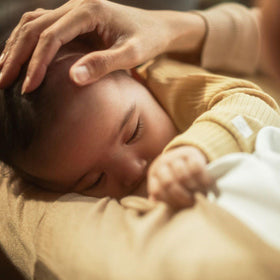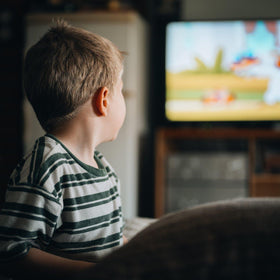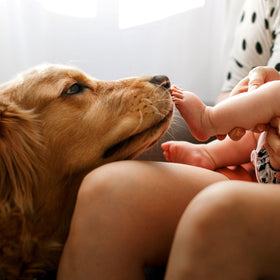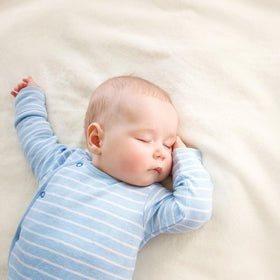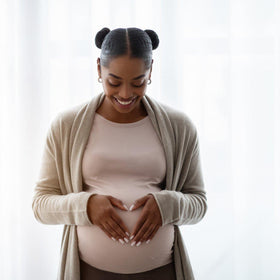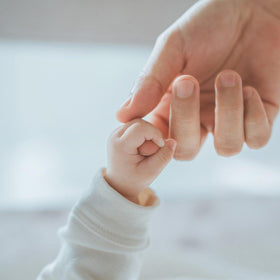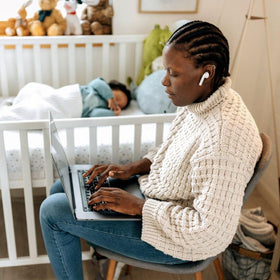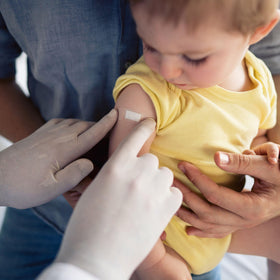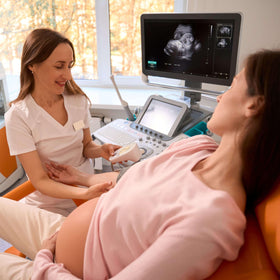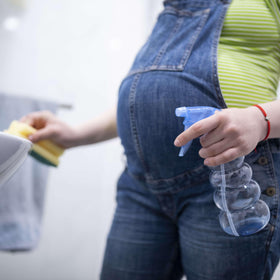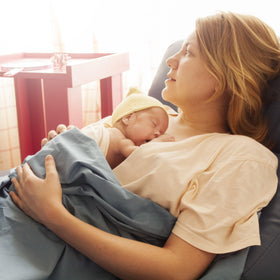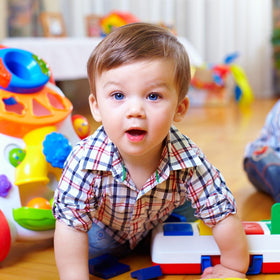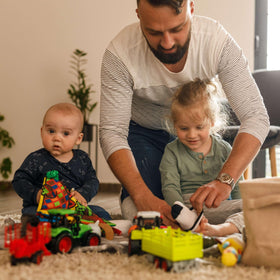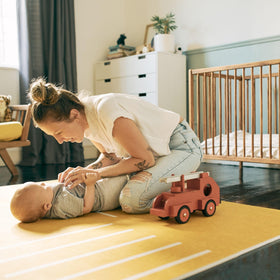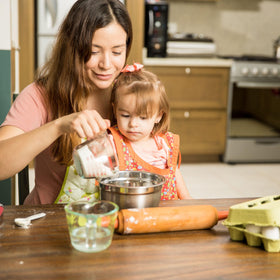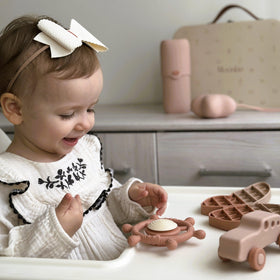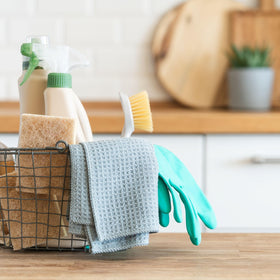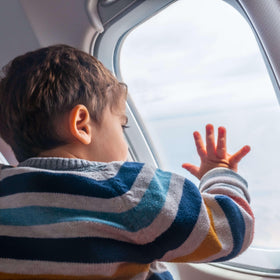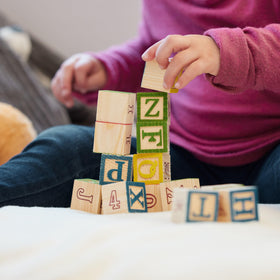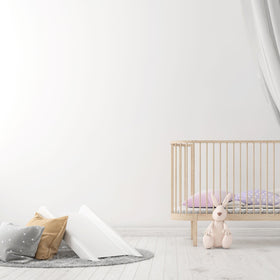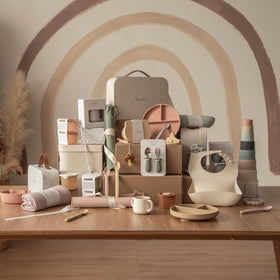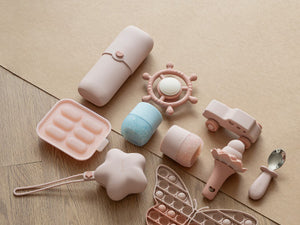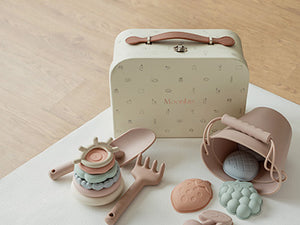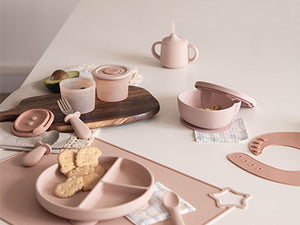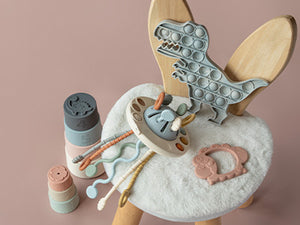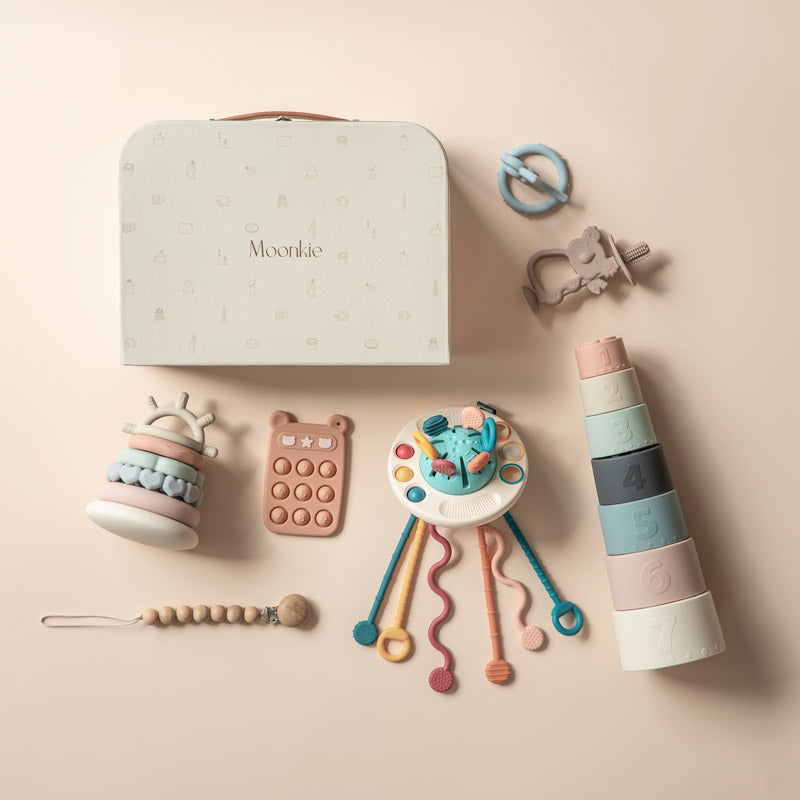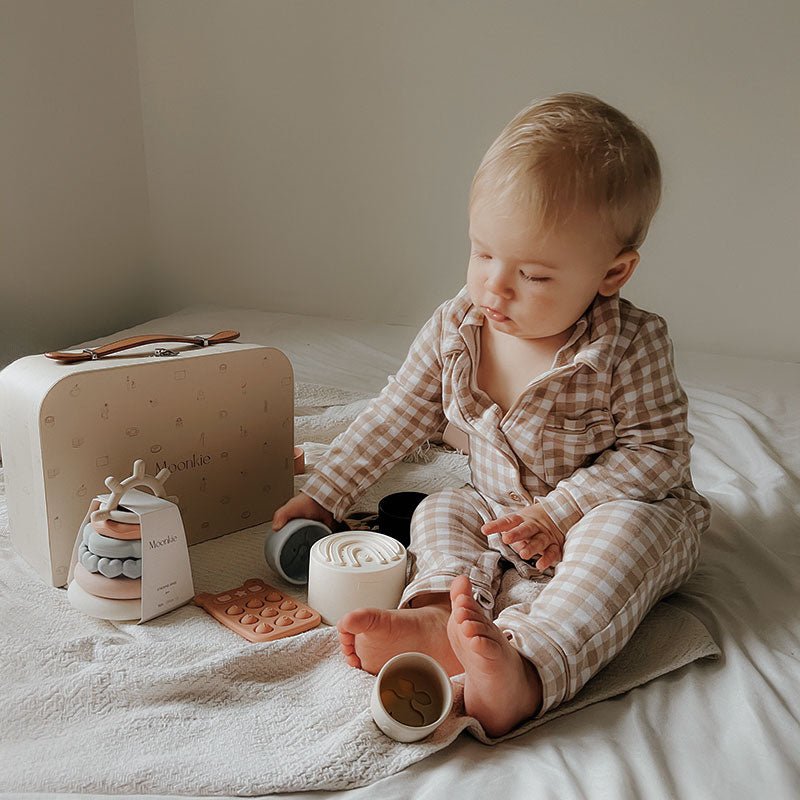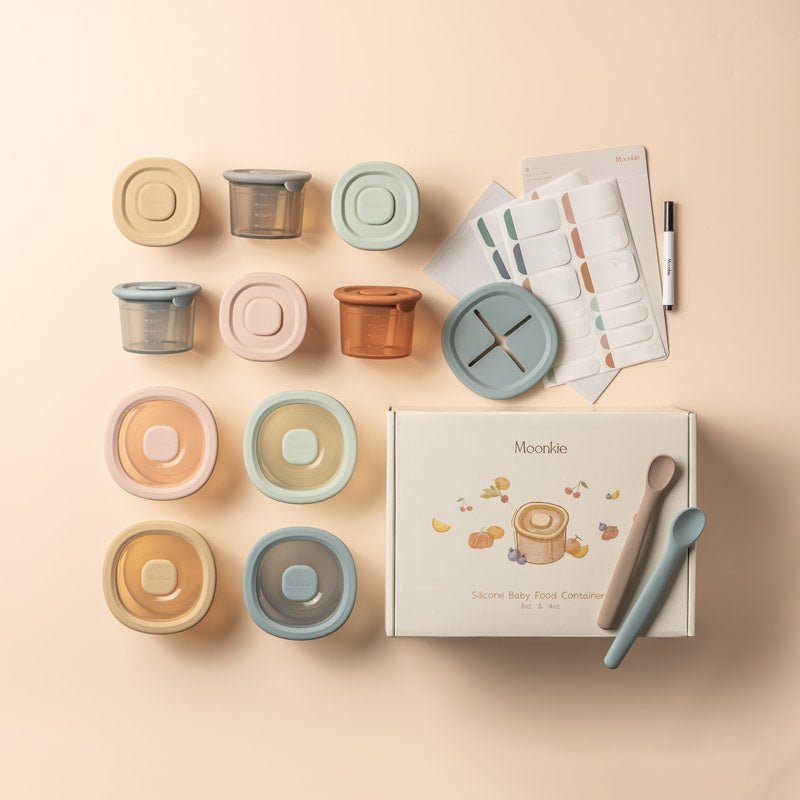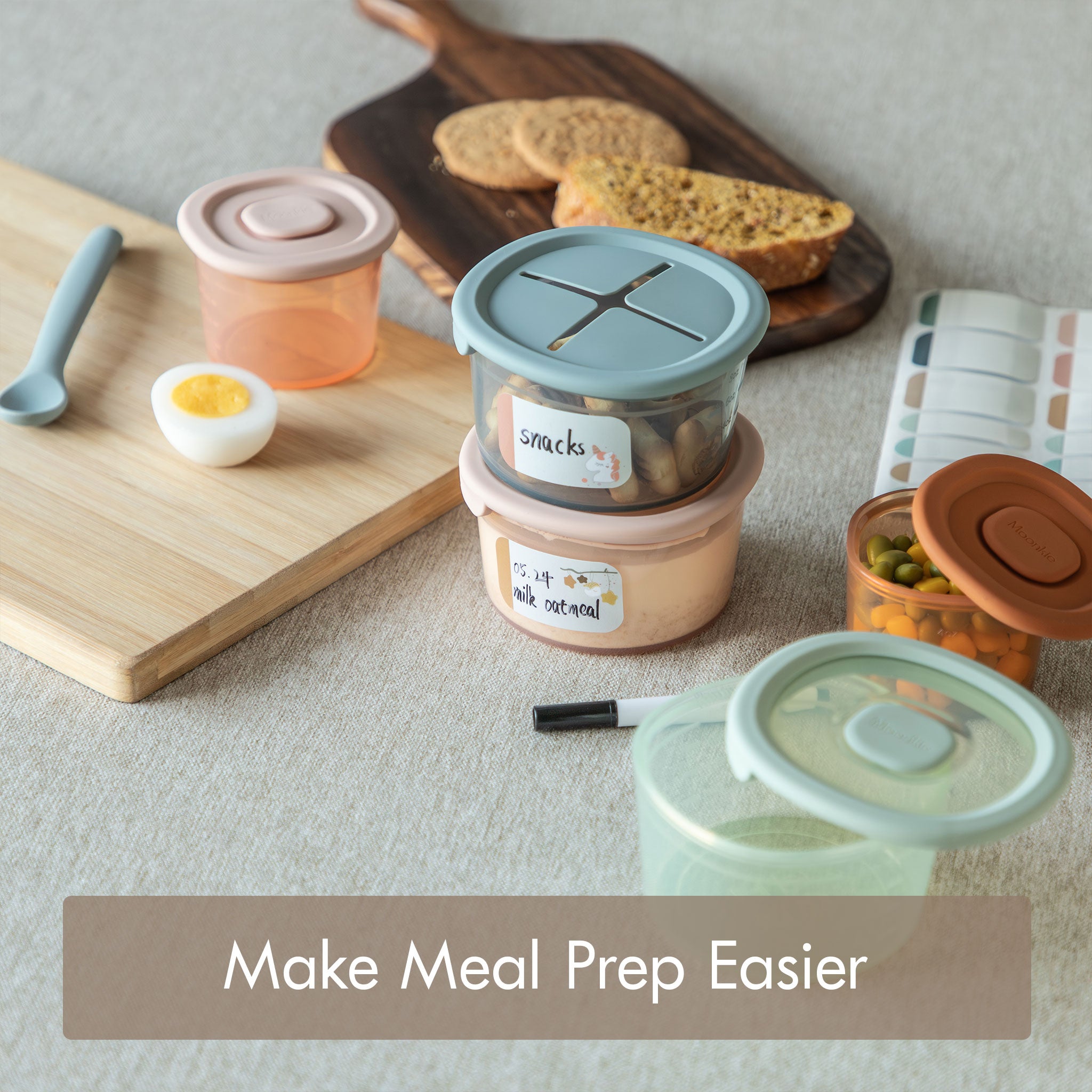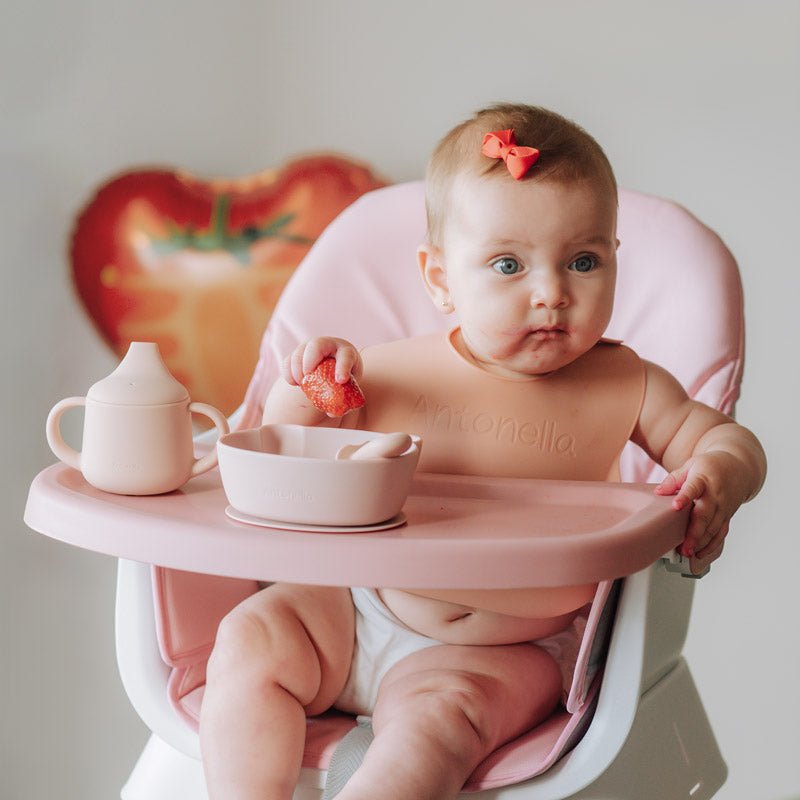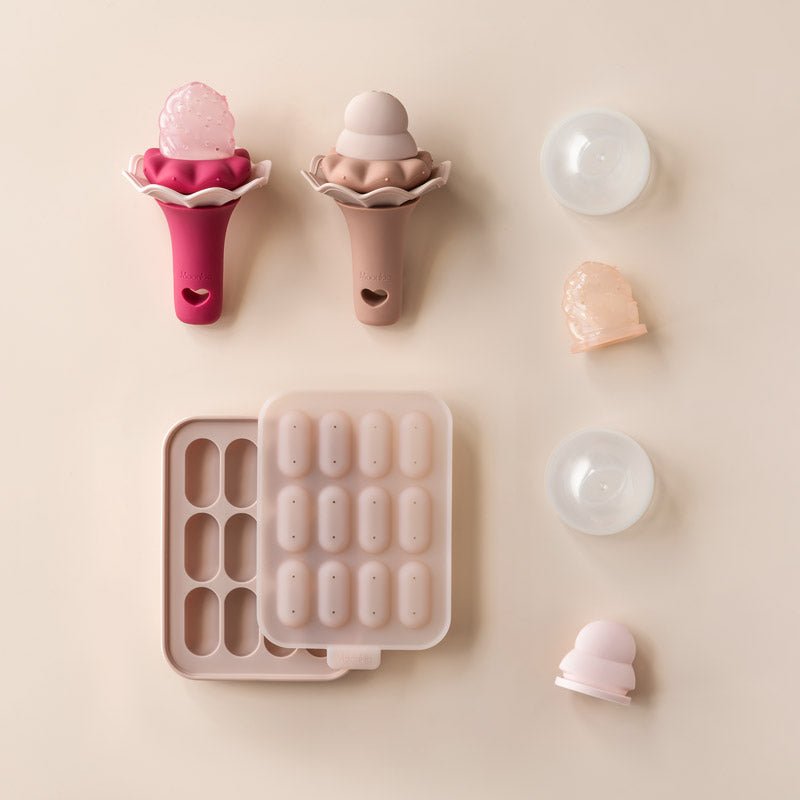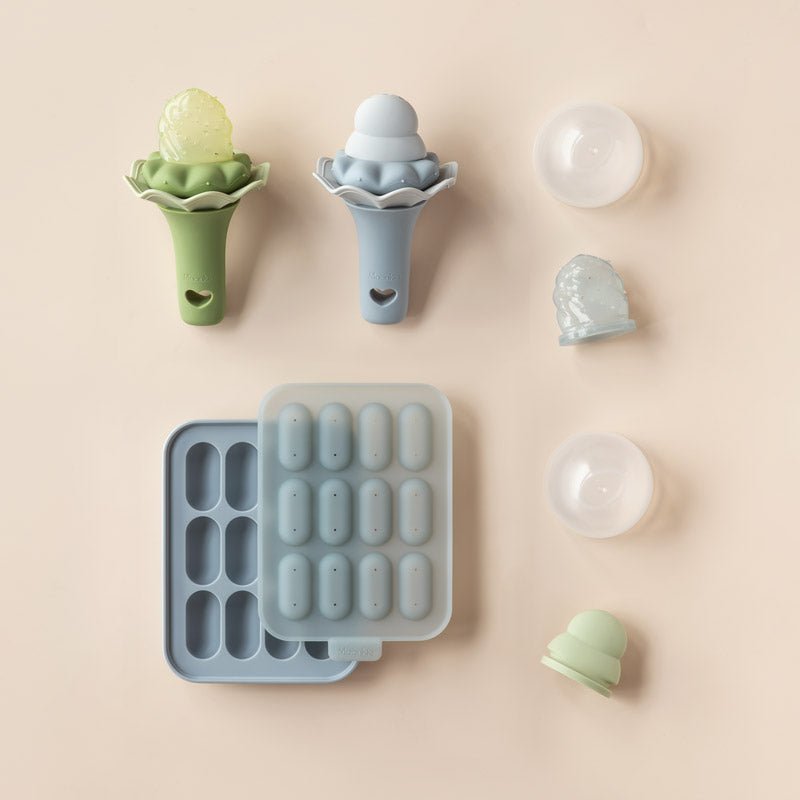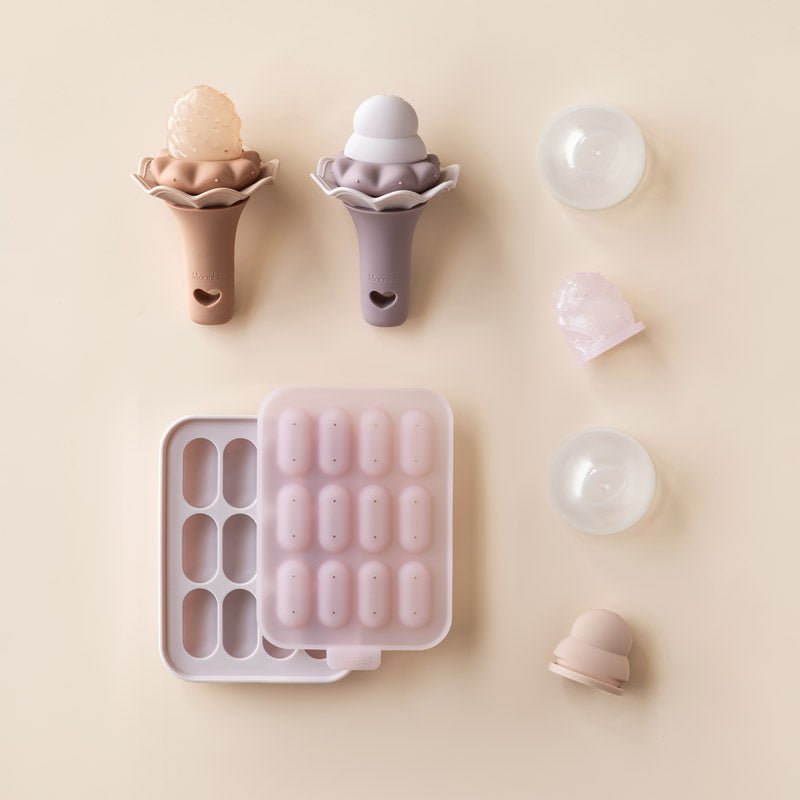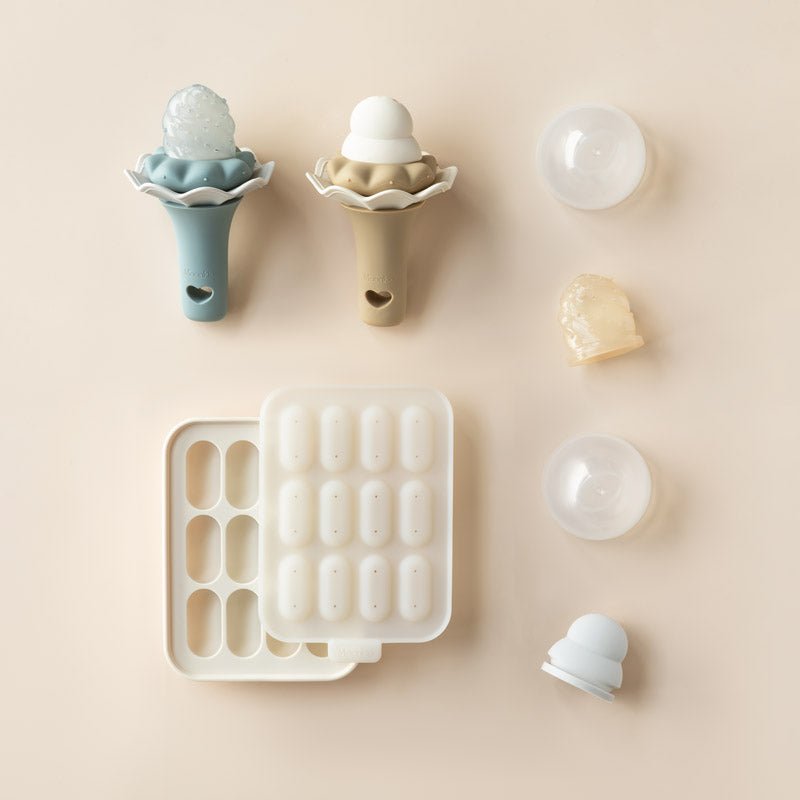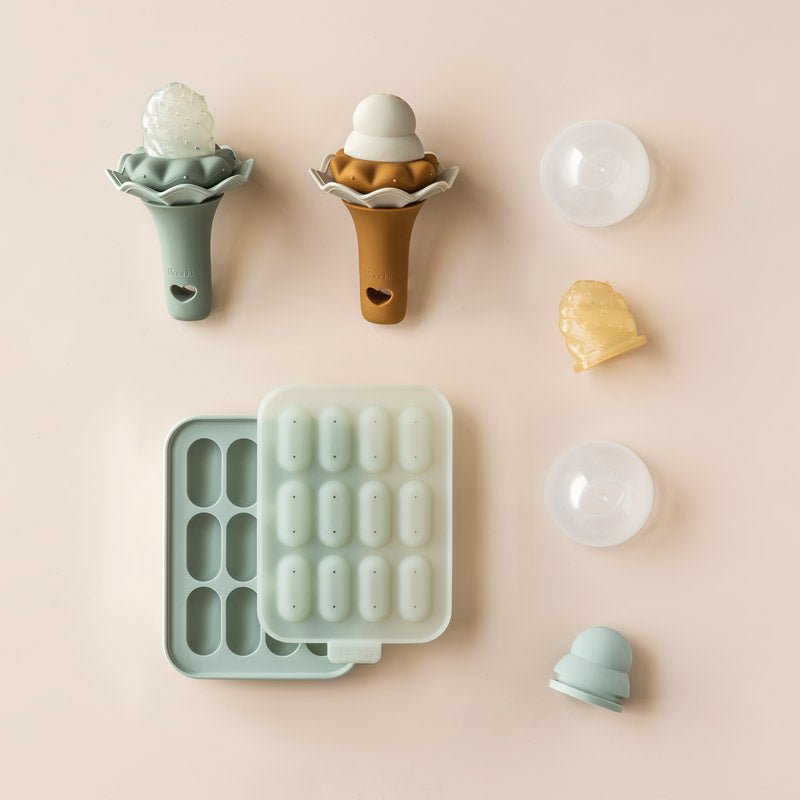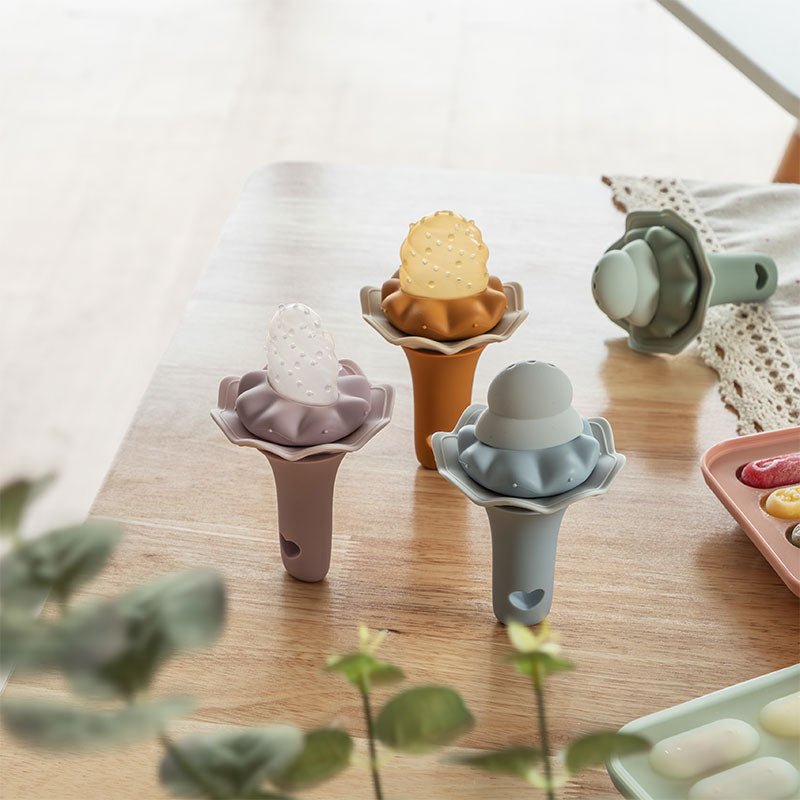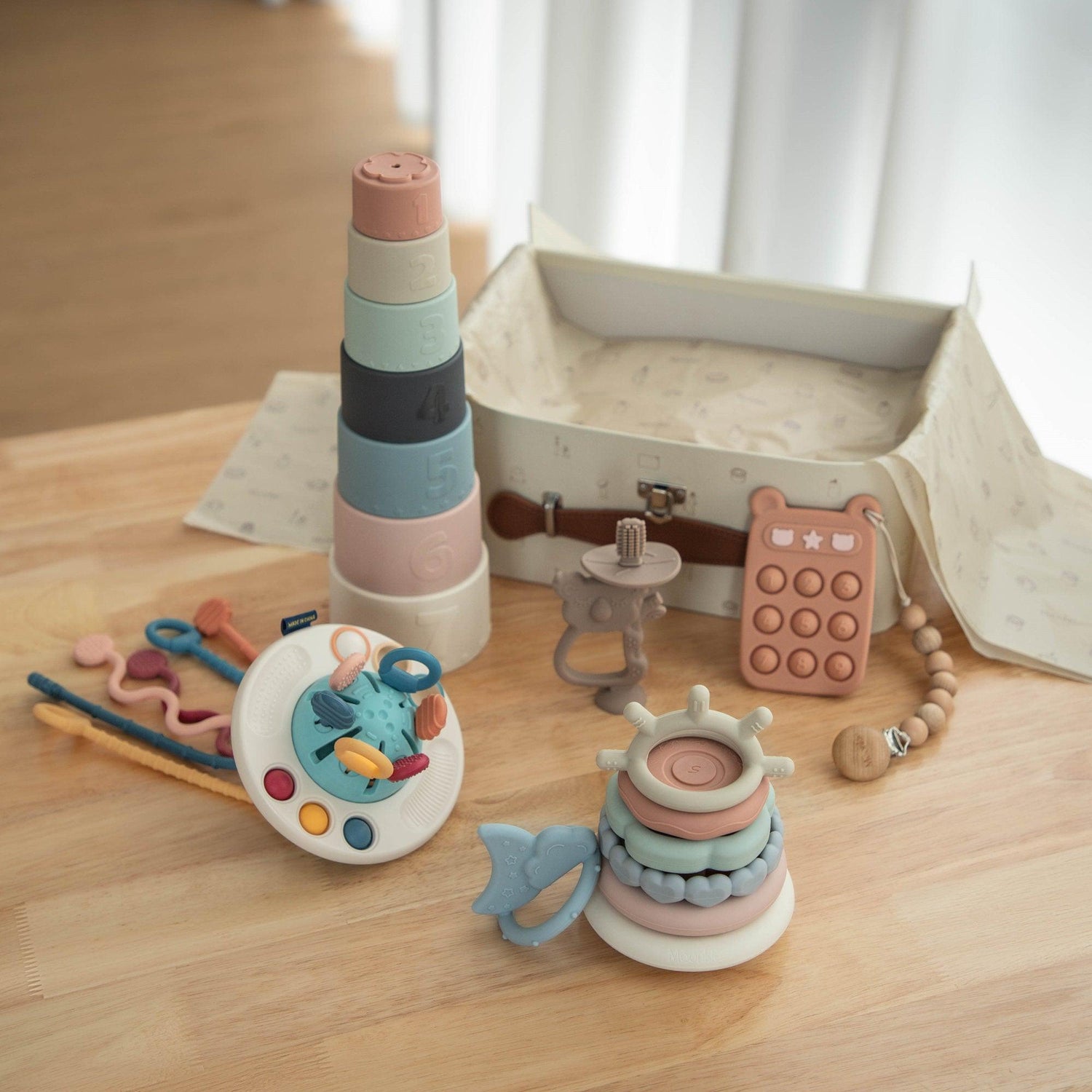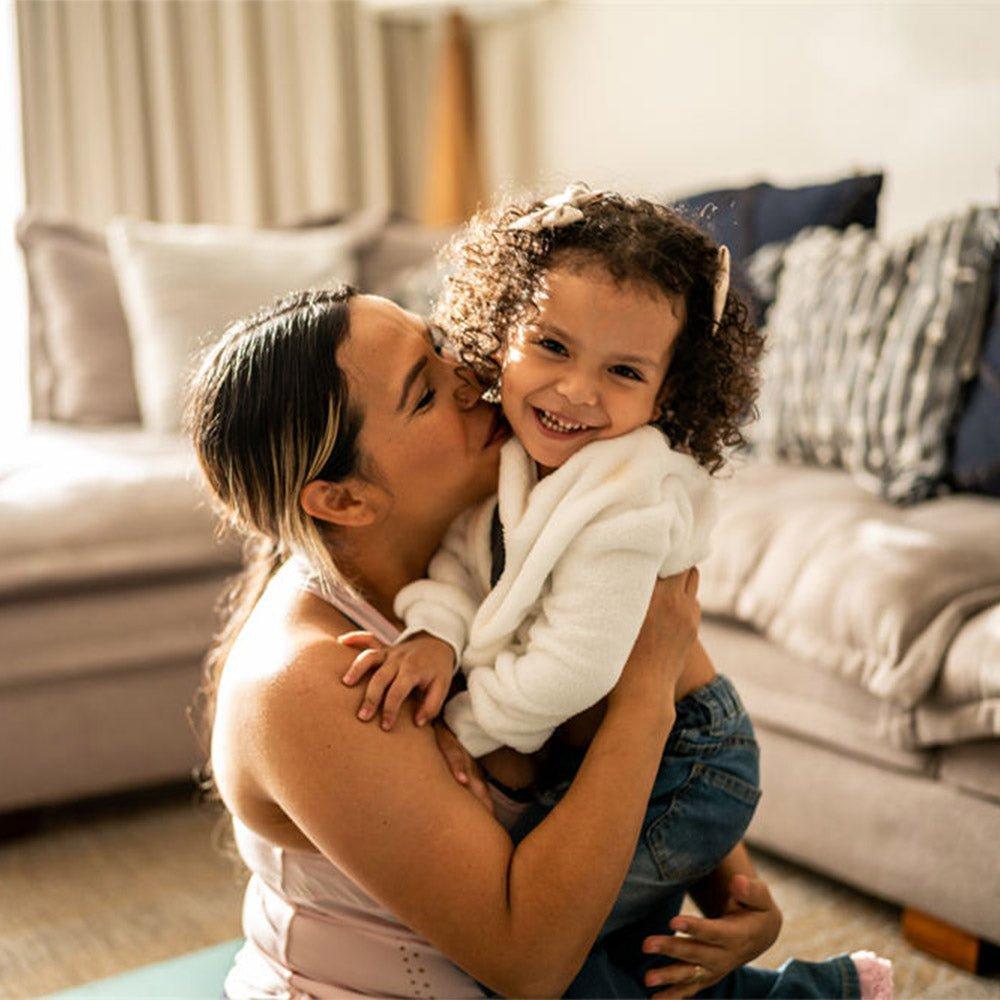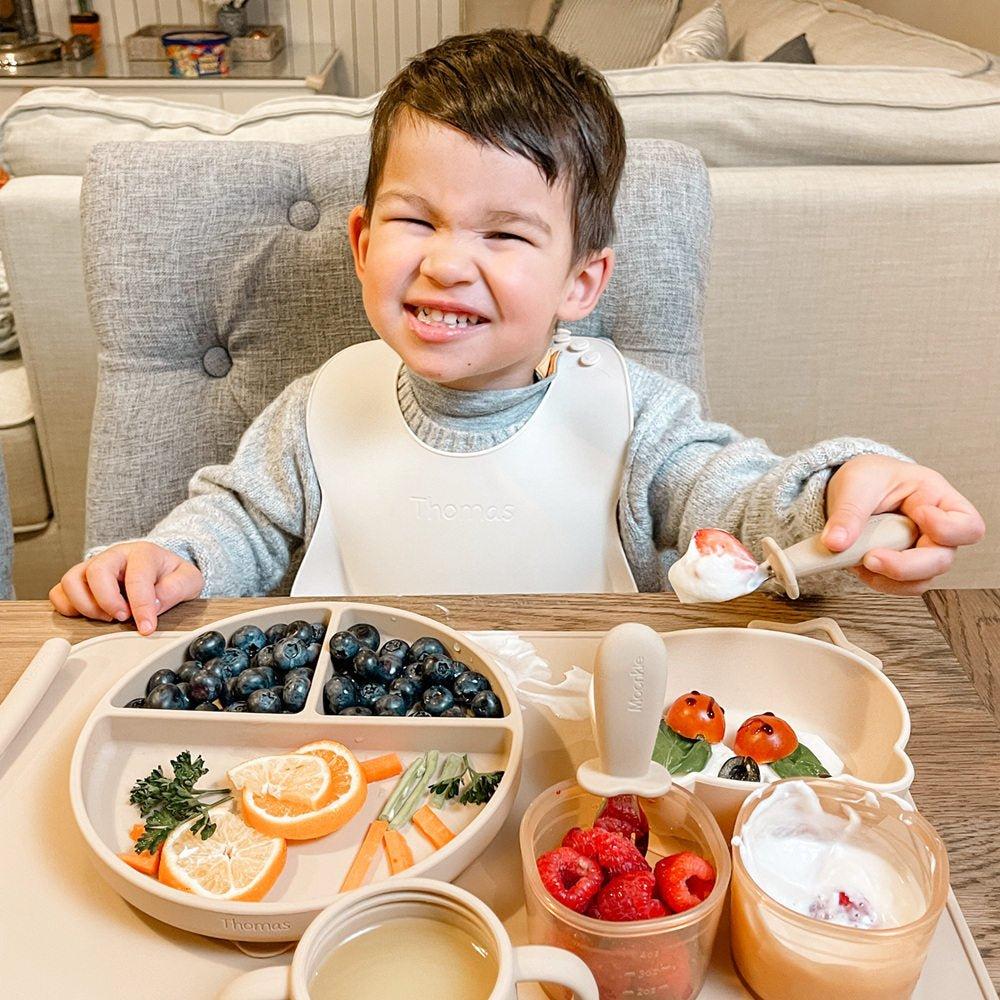If you are a first-time parent wondering what the heck Montessori toys are and why so many bloggers, influencers, and homeschooling parents talk about them, you are not alone.
Montessori toys are designed with the principles of the Montessori Method in mind. The Montessori Method is a child-led education style created by Maria Montessori around 1907. Montessori toys and activities are simple and have no batteries or electronics, so children can focus on figuring them out.
Seems straightforward enough, right? Well, not quite. The Montessori label is thrown about frivolously these days, which makes it hard to know the difference or even if it matters. There's a lot of questions about what Montessori toys are and how they work, so let's get into them!
1. What Are Montessori Toys?
Montessori toys are simple educational toys designed to encourage child-led learning and discovery. They are made from natural materials, such as wood, natural rubber, and cotton, so children can explore the textures, weights, and feel of real-world materials.
By reducing toys to their natural simplicity, Montessori-minded parents and teachers promote children's sensory exploration and motor skill development.
Can Montessori Toys Be Made of Non-Natural Materials?
Yes and no. Montessori purists will say they can absolutely not be made with artificial materials because Dr. Montessori stuck with natural materials. However, others are more lenient and say that Montessori toy designs made with high-quality silicone or high-end plastic are acceptable as long as these aren't the only toys.
Though only playing with natural material toys offers a rich and varied sensory exploration experience, Montessori toys made of food-grade silicone are hypoallergenic, easy to clean and sterilize, and hold up to wear and tear far better than natural materials can.
Plastic toys are comparably weak, can leach chemicals, and only offer a smooth texture, so they are not ideal.
For more on comparing baby toy materials, read Pros and Cons of Silicone Baby Toys: A Comprehensive Guide for Parents.
2. How Do Montessori Toys Differ From Regular Toys?
The main difference between Montessori and regular toys is that Montessori-minded designers make toys that are open-ended and encourage creative play. Many regular toys are intended for a specific purpose and can limit a child's imagination.
Montessori toys and activities are brilliantly tailored to be open-ended within boundaries. That is, there is no one right way to play with Montessori toys, but there is a goal.
A goal may be stacking rings on a post, sorting colorful wooden shapes, or pouring water into little metal cups to hear different sounds. However, this goal does not stop little ones from experimenting with different ways to play or combine with other toys to achieve something else.
3. Are Montessori Toys Suitable for Newborns?
Yes! Newborn Montessori toys are perfectly suitable for newborns because they stimulate babies' senses. Sensory observation and exploration encourage early development (source).
However, newborns will not play with toys in the sense that three-month-olds and older babies will play. Newborn Montessori-inspired toys focus on catching attention with colors, patterns, and movement. Think of a simple black and white mobile hanging above the crib or a wooden rattle painted with bright colors.
4. How Do Montessori Toys Help Babies and Toddlers Develop?
Designers of Montessori toys focus on creating toys that engage little ones' natural curiosity and desire to play. When a baby or toddler becomes focused on figuring out an open-ended toy, they practice fine motor, problem-solving, hand-eye coordination, and sensory skills.

Electric toys distract babies and toddlers to entertain them. Since Montessori toys are passive (no batteries or electricity), they require a baby or toddler to take the initiative to play actively with them. The difference? An engaged little one is practically teaching themselves!
If children of other ages regularly play with your little one, Montessori toys go even further by providing opportunities for your baby or toddler to observe and practice communication, sharing, teamwork, and conflict (let's be honest, conflict happens).
If you want to read more about child development, check out Early Childhood Skills and Montessori Education: What You Should Know.
What Types of Montessori Toys Are Best for Babies?
Let's be real: babies will gnaw on whatever is within reach to soothe their irritated gums. So, whatever toys you give your baby must withstand teething and be easy to clean. They must also be graspable for tiny hands and free of tiny pieces.
As far as specific toy types, you can never go wrong with stacking toys, teething rings with various textures, balls, or colorful blocks. Read 5 Clever Baby Toys for Building Fine Motor Skills for more ideas!
What Types of Montessori Toys Are Best for Toddlers?
Most toddlers love playing with Montessori toys and activities when given the calm, consistent environment to do so. When looking for Montessori toys for toddlers, focus on toys that exercise fine motor, identification, fine motor, and problem-solving skills.
For example, stacking toys, sensory bins, ball tracks, and shape sorters are all excellent options. Check out these 10 Montessori Stacking Toys for Toddlers for some ideas on how differing styles of the same idea can challenge different skills.
By the preschool age, you need to involve your little one in real-world tasks as much as possible. Here are some ideas of things preschoolers can help with at home or in the community to learn:
cleaning dishes
making bread
setting the table
doing the laundry
cleaning the house
brushing a pet
planting seeds
watering and weeding a garden
harvesting fruits and vegetables
feeding chickens and gathering eggs
picking and arranging flowers
washing the car
A huge part of Montessori education is getting children involved in real-life tasks to prepare them for the future, instill a sense of belonging, and promote communication and teamwork.
Though young and likely to really slow you down, your toddler is at the perfect age to begin being a helper. So, don't invest in toy kitchens and plastic gardens; invest in toddler-sized tools, aprons, and utensils!
5. Can Montessori Toys Be Made At Home?
Yes! Montessori toys and activities can be made at home at a low cost. Some toy designs are more straightforward than others, but generally speaking, you can make the bulk of them at home.

Consider the age and skill level when making toys and activities for your little one. On the one hand, you don't want to give a bin full of dried beans and little race cars to a baby because he's going to stick everything in his mouth! Likewise, you don't want to give a baby mobile or rattle to a toddler.
On the other hand, giving your toddler a little toolset and some pieces of scrap wood will likely lead to frustration or injury. So, keep the toys and activities you create at home appropriate to your little one's ability.
If you are homeschooling your preschooler, check out these sensory activities that you can make at home: 7 Unique Preschool Sensory Activities for Homeschool!
6. How Often Should I Rotate My Child's Montessori Toys?
How often you rotate your child's toys depends on personality, contentment, development stage, and whether siblings are around. The best thing to do is watch your little one closely. If she grows discontent with or loses interest in her toys quickly, it's probably time to rotate a few out.
If there are multiple siblings around, rotating toys every week or two may minimize arguing and snatching. With just one child, however, you can simply rotate toys when it seems like she needs a fresh playtime.
7. How Do Montessori Toys Fit into the Montessori Method?
Montessori toys are not the focal point of the Montessori Method. In fact, they are just a piece of a much larger philosophy. Toys are simply tools used in the activities that Montessori teachers arrange to practice essential life skills.
For instance, simple toys and activities in a newborn, toddler, preschool, and kindergarten Montessori classroom will serve several purposes (source):
Broad Benefit |
Specific Skills |
building fine and gross motor skills |
grasping, stacking, placing, walking, balancing, carrying, passing on, throwing, catching, rolling, etc. |
building language skills |
naming objects, describing actions and ideas, conversation, pacing words, communicating tangible and intangible things |
building social skills |
developing manners, learning what to say when spoken to, practicing sharing and patience |
building sensory skills |
discovering and identifying textures, learning shapes and colors, matching sounds to actions or things, observing how things relate to one another |
Many toys outside of Montessori provide children with opportunities to build these skills as well! So, if your child becomes enamored with a non-Montessori toy from time to time, look for ways that toy helps your little one develop and incorporate it where you can.
8. How Do Montessori Toys Encourage Socialization?
Montessori toys encourage socialization primarily by being passive toys. Battery-operated and electronic toys encourage socialization by entertaining kids and giving them something to talk about for a time, but passive toys require cooperation, sharing, and communication.
Imagine a group of kids playing with a remote-controlled car. They may laugh, run, and take turns driving the car. But the only thing they may do that promotes specific communication skills is build a track for that car to navigate.
Now imagine a group of kids on an open floor with boxes full of blocks. Those kids can mill around in complete boredom, play individually or in pairs, create a game, or work together to build a huge track, wall, tower, or building---whatever they come up with!
The same flexibility happens in social interactions when a group of kids are put on a life task. A group of kids working in a little community garden will find endless things to communicate about. Additionally, more reserved children can listen in to learn vocabulary while observing examples of communication.
9. Can Montessori Toys Be Used Alongside Other Educational Methods?
Of course! You can use Montessori toys alongside other education methods as long as the goal of the activity is to play freely. Montessori toys complement homeschooling, Waldorf education, liberal arts curriculum, and STEM activities.

Since Montessori toys are open-ended, they encourage creative play at each child's unique pace. Parents can even reinforce what their children are learning in preschool or school with Montessori toys and activities at home.
For example, if your child is learning about shapes in school, you can use Montessori wooden shape puzzles or geometric shapes to help reinforce what they are learning.
Homeschooling parents can use Montessori toys and activities in their regular school day to give their children hands-on learning experiences.
10. Do You Need Montessori Toys to Practice the Montessori Method?
Montessori toys are just one tool in your educational toolbox. They can be an excellent way to supplement whatever you teach that day, but they are not absolutely integral to practicing the Montessori method.
Some parents have adopted the Montessori Method's principles in their homes, but they use a mix of toys or a few toys and participate in daily tasks and events.
Principle |
Explanation |
Respect the child. |
Respect the uniqueness of each child and their right to free will, choice, learning at their own pace, and correcting themselves. |
Young children have an absorbent mind. |
The first six years of a child's life are the most crucial because that's when children soak up everything they can like a sponge for rapid development in mind, body, and emotions. |
Children have sensitive periods. |
Sometimes, a child is intensely focused on or committed to mastering a task. These "sensitive periods" are windows of opportunity for a child to learn that skill efficiently and effectively. |
Individualized learning is best. |
Personalized learning centered on each child's unique interests, needs, and developmental stage creates the best results. |
The whole child needs education. |
Kids shouldn't sit for hours in a classroom! They need to move, interact, and learn intellectually, physically, emotionally, and socially. |
Children should be able to move and choose freely. |
Children learn best when they are free to choose their own work and move along as their interest guides them. |
A prepared environment is key. |
A prepared space provides natural boundaries within which children can choose and move freely. The space should be uncluttered, organized, and child-centered. |
Kids want to learn! |
Learning is rewarding in and of itself, so kids can't help themselves. They don't need stickers and checkmarks; they need to learn interesting things at their own pace. |
Kids need to practice independence. |
Children learning to handle self-care, cleaning, and real-life tasks build confidence and competence for life. |
Kids will teach themselves. |
Given the space and activities to do so, kids will practically teach themselves. |
By adhering to these Montessori principles and involving their children, parents can bring elements of Montessori education home!
11. Can You Use Montessori Toys in a Home With Multiple Kids of Different Ages?
Absolutely! The Montessori classroom typically includes kids of all ages to encourage natural social skills and older kids teaching younger kids. So, Montessori toys and activities are even more effective when shared with others!
It is entirely possible that arguing, snatching, and tantrums will happen anytime more than one kid plays with the same toy or activity. That's okay! Just model once or twice how the argument should be handled and give them space to work out the rest.
12. How Can I Ask for Only Montessori Gifts at a Baby Shower?
Have mixed feelings about your impending baby shower? On the one hand, it's so kind and sweet that friends and family want to shower you and your baby with gifts. On the other hand, you may be afraid of offending those lovely people when you give away loud plastic toys or battery-operated baby products.

You can get around some of this by creating a baby registry and passing it on to whoever is putting together the baby shower. That person will probably send it to everyone invited.
But not everyone buys from a registry. These are the individuals you'll have to talk to directly. You could send a short and sweet email or text message directly to each person invited to the baby shower and ask for only Montessori gifts.
Example Message
However, if direct statements are not your thing or you are sure your circle wouldn't appreciate that, you could try writing a note, card, or email thanking everyone for their interest in coming to the baby shower and share a brief picture of what you need to raise your baby with the best start possible.
Here is an example email:
Thank you so much for signing up to attend our baby shower!
I've already been asked a few times about what we need for baby, so here's the registry link. If you want to buy something that isn't on the registry, here are some ideas:
Montessori toys (wooden blocks, stacking rings, shape sorter, etc.)
muslin blankets
glass bottles
silicone sippy cup
eco-friendly toys and products
Please don't give any of the following as it doesn't fit our lifestyle or intentions for baby:
no battery-operated or electronic toys or products
no plastic toys, pacifiers, bottles, or cups
We are so excited to see you at the baby shower!
You can add more to these lists as you'd like, just be clear. You are the parent, so don't let others push what they want your baby to have onto you.
Odds are that someone will still give you things you don't want. That's okay; it's the thought that counts! You can give away whatever you don't want after the shower.
13. What Should I Do With Noisy, Plastic Toys I Don't Want?
For whatever reason, folks give babies and toddlers noisy plastic toys for birthdays and holidays, even when they know it's not your family's lifestyle. Maybe it's 80s and 90s nostalgia. Whatever plastic toys in good shape that you don't want for your baby can be donated.
Broken plastic toys can be recycled according to the recycling number on the bottom. If you are not sure whether a toy is made of bad or good plastic, read Are Plastic Toys Bad for Babies?
What if your toddler loves this toy? Well, that's up to you. You can let it live in your house until your toddler doesn't play with it anymore, or you can talk to your toddler about replacing it with a new toy.
14. What's the Difference Between Open-Ended Toys and Montessori Toys?
It depends on who you ask and what toys you look at. Proponents of the Waldorf education method will likely hold that Montessori toys and activities are too structured to be truly open-ended. However, teachers and parents who take a Montessori approach know better.
Sure, some activities and toys can be fairly structured, but they don't have to be. Young Montessori students play with open-ended wooden blocks, shapes, and sensory bins just as much as Waldorf students.
15. Should I Get Rid of Dolls, Cars, and Other Non-Montessori Toys?
No! Don't throw out your child's dolls, cars, and other non-Montessori toys just because they are not Montessori. In a Montessori classroom, there should be very few non-Montessori toys; but at home, your child can have toys that he likes along with Montessori toys.

Montessori toys and activities are lots of fun to figure out during sensitive periods of focus, but they don't have to be the only thing your child plays with. Toys without batteries, electrical components, or choking hazards in the early years are all beneficial to a point.
For example, cars and dolls are commonly favorite imagination toys among young children. My son learned all kinds of lessons about friction, gravity, obstacles, force, and shapes from playing with cars--and all that while working on hand-eye coordination and fine motor skills!
In a Nutshell
The Montessori Method is a solid approach to raising curious, rapidly developing children into observant, well-rounded adults. Incorporating Montessori toys into your child's education will help promote focused play, exploration, and self-learning.
And hey, if you cannot afford name-brand Montessori toys, you can always get creative and make your own!

